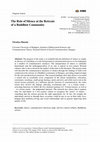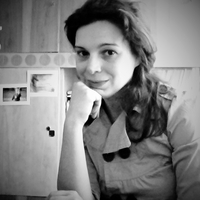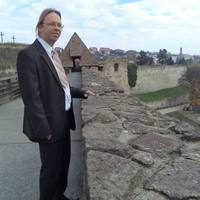Papers by Orsolya Huszár, PhD
JEL-KÉP
A cikk egy magyarországi buddhista közösség rendszeres elvonulásainak kommunikációs színtereit el... more A cikk egy magyarországi buddhista közösség rendszeres elvonulásainak kommunikációs színtereit elemzi. Röviden bemutatja az elvonulás hátterét, kontextusát, célját, programjait, helyszínét, különös tekintettel a központi színtérre: a zendóra. Leírja, mit jelent ez a színtér a kommunikáló ágensek számára, valamint hogyan határozza meg az ott zajló események lehetséges interpretációit. Fontos kérdés, hogy a résztvevők a színtéren zajló kommunikáció révén milyen felkészültségekhez jutnak, amelyek segítik őket a mindennapi problémamegoldásban. A felkészültségek kialakulásában fontos szerepük van az elvonulás mint színtér sajátos kommunikációs jellemzőinek és szabályainak, amelyek bizonyos szintű hozzászokást igényelnek. Ilyen például a csend megszokottól eltérő szerepe, a beszélőváltás módja, valamint a figyelmes hallgatás előnyben részesítése a reflektálással szemben.

KOME, 2016
The purpose of the study is to establish that the definition of silence as simply an absence of s... more The purpose of the study is to establish that the definition of silence as simply an absence of something or as the background of communication proves to be inadequate in a number of communicative instances. The interpretation of silence is culturally determined, and the underappreciation of its role is typical in low-context Western cultures; this is also evinced by the neglect of the topic in the literature. The present study will describe the communicative functions of silence through the findings of field work conducted at the retreats of a Buddhist community in Hungary, providing empirical input for the relevant theoretical constructs. The research findings show that silence is accorded a central role in essentially every component of the retreat (meditations, relaxation, ceremonies, teachings, small-group sharings, meals and rest); and while each event at the retreat focuses primarily on a different specific function of communication, the entire retreat does involve the linkage, affecting, revelational andto a certain extentactivating functions (to follow the five-element typology of J. Vernon Jensen), as well as to a lesser extentthe judgmental function. The research also shows that it requires time for individuals in a low-context culture to recognize the "point" of silencesomething that the retreats provide the right opportunity for. In fact, the insights the individuals arrived at through these occasions could be put to use in their daily lives, helping their problem-solving and social relationships and in general improving their quality of life.










Uploads
Papers by Orsolya Huszár, PhD